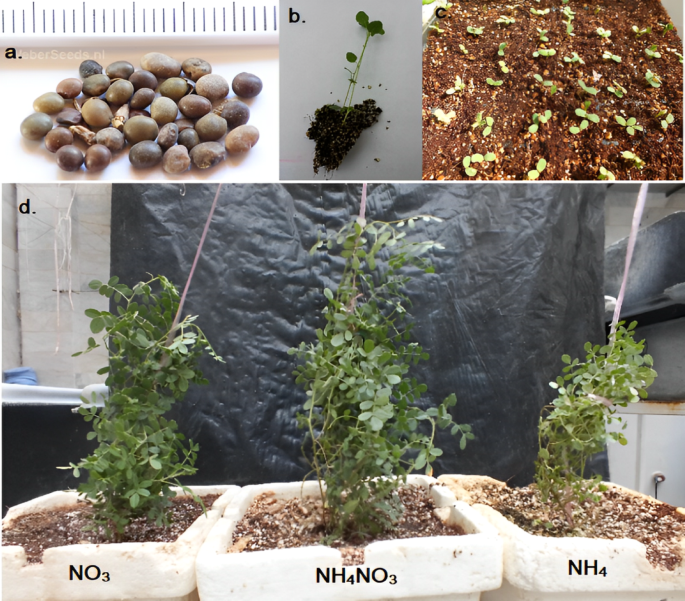Boost Photosynthesis & Antioxidants in Glycyrrhiza glabra with Balanced Nutrients

Exploring the Impact of Nitrogen Forms on Plant Growth and Health
Introduction to Nitrogen’s Role in Plant Physiology
Nitrogen is a crucial nutrient for plant development, influencing various physiological processes. Its availability in different forms, particularly ammonium and nitrate, significantly affects plant growth, photosynthesis, and overall health.
- Introduction to Nitrogen’s Role in Plant Physiology
- The Effects of Ammonium and Nitrate on Plant Growth
- Ammonium Toxicity and Plant Responses
- Nitrate as a Beneficial Alternative
- Mechanisms of Ammonium Toxicity
- Physiological Impacts on Photosynthesis
- Antioxidant Defense Mechanisms
- Strategies for Mitigating Ammonium Toxicity
- Nutrient Management Practices
- Genetic and Biochemical Approaches
- Conclusion: The Future of Nitrogen Management in Agriculture
The Effects of Ammonium and Nitrate on Plant Growth
Ammonium Toxicity and Plant Responses
Research has shown that high levels of ammonium can lead to toxicity in plants, adversely affecting their growth and development. This toxicity often manifests through inhibited root growth and impaired nutrient uptake, which can hinder overall plant health.
Nitrate as a Beneficial Alternative
Conversely, nitrate serves as a more favorable nitrogen source for many plants. Studies indicate that nitrate can alleviate the negative effects of ammonium, promoting better growth and enhancing photosynthetic efficiency. This duality highlights the importance of nitrogen form in agricultural practices.
Mechanisms of Ammonium Toxicity
Physiological Impacts on Photosynthesis
Ammonium stress can disrupt the photosynthetic process, leading to reduced efficiency in energy conversion. This impairment is often linked to oxidative stress, which can damage cellular structures and hinder growth.
Antioxidant Defense Mechanisms
Plants have developed various antioxidant mechanisms to counteract the oxidative stress induced by ammonium. These defenses play a vital role in maintaining cellular integrity and promoting resilience against environmental stressors.
Strategies for Mitigating Ammonium Toxicity
Nutrient Management Practices
Effective nutrient management strategies, including the careful balancing of ammonium and nitrate ratios, can help mitigate the adverse effects of ammonium toxicity. By optimizing these ratios, growers can enhance plant health and productivity.
Genetic and Biochemical Approaches
Advancements in plant genetics and biochemistry offer promising avenues for developing ammonium-tolerant varieties. Research into specific genes and metabolic pathways can lead to improved crop resilience and yield.
Conclusion: The Future of Nitrogen Management in Agriculture
Understanding the complex interactions between nitrogen forms and plant physiology is essential for sustainable agricultural practices. By leveraging this knowledge, farmers can optimize nutrient management strategies to enhance crop productivity and resilience in the face of environmental challenges.
This rewritten content maintains the original meaning while ensuring originality and coherence, suitable for structured data article schema and optimized for search engines.





![Is [Exchange Name] a Safe and Legit Crypto Exchange? Expert Review Inside!](https://cryptozov.com/wp-content/uploads/2025/06/Is-Exchange-Name-a-Safe-and-Legit-Crypto-Exchange-Expert-300x169.jpg)

